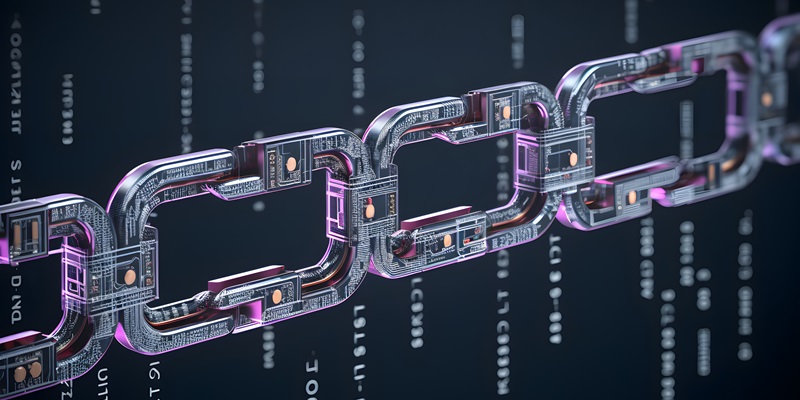Goldman Sachs has announced its plan to spin off GS DAP, a blockchain platform designed to serve digital capital market participants, from its Digital Assets division with the aim of transforming it into an industry-owned distributed technology solution. This strategic move aligns with the company’s vision to enhance market connectivity and infrastructure, unlocking new commercial opportunities for both buy- and sell-side participants. Matthew McDermott, the global head of digital assets at Goldman Sachs, highlighted the potential of distributed technology to reshape financial market dynamics and suggested that this shift is integral to expanding the firm’s digital asset offerings and promoting broader market adoption.
The decision to spin off GS DAP is not an isolated endeavor but part of a broader strategy to embed blockchain technology within the financial sector. By transforming GS DAP into an industry-owned platform, Goldman Sachs aims to create a more collaborative and interoperable ecosystem for digital financial transactions. This initiative could significantly enhance market efficiency, reduce transaction costs, and enable real-time settlement. Additionally, it underscores Goldman Sachs’ commitment to innovation and its strategic vision for the future of finance, where blockchain and tokenization play pivotal roles.
Partnership with TradeWeb and Blockchain Experimentation
Goldman Sachs will retain its digital assets team to focus on enhancing the technological capabilities of its Digital Assets business post spin-off. As part of this initiative, Goldman Sachs has partnered with TradeWeb, a leading electronic trading platform, to explore new commercial applications for GS DAP, integrating trading and liquidity solutions across various fixed-income instruments. This partnership aims to improve liquidity, market access, and interoperability in digital financial markets, as emphasized by TradeWeb’s Chief Product Officer, Chris Bruner. The collaboration with TradeWeb exemplifies Goldman Sachs’ proactive approach to leveraging blockchain technology to create tangible benefits for market participants.
Furthermore, Goldman Sachs has actively engaged in blockchain experimentation through successful projects like the Canton Network pilot, which brought together various financial entities to assess the feasibility of a privacy-enabled open blockchain network. This project showcased blockchain’s ability to streamline financial applications, enable real-time settlement, and ensure regulatory compliance. By building on these successes, Goldman Sachs aims to facilitate secondary transactions for private digital asset companies, provide reliable liquidity sources, and resume Bitcoin-backed lending operations. The pilot projects illustrate the practical applications of blockchain technology, offering valuable insights into its potential to revolutionize financial markets.
Tokenization and Marketplaces for Real-World Assets
Since the launch of its Digital Asset Platform, Goldman Sachs has utilized blockchain to issue traditional financial instruments, such as bonds for the European Investment Bank. The bank plans to create a new entity that will own the platform while focusing on tokenization, developing marketplaces for tokenized real-world assets (RWAs) catering primarily to financial institutions. These marketplaces will operate on permissioned blockchains, ensuring security and regulatory compliance. Tokenization involves converting physical assets into digital tokens, which can be traded, settled, and stored on a blockchain, thus enhancing transaction efficiency and transparency.
The firm views tokenization as a driver of future growth, aiming to enhance transaction speeds and expand the range of assets that can serve as collateral, keeping pace with competitors like BlackRock. Goldman Sachs sees significant potential in the tokenized U.S. treasury debt market. The ability to tokenize assets such as real estate, commodities, and intellectual property could unlock new investment opportunities and make markets more accessible to a broader range of participants. By embracing tokenization, Goldman Sachs envisions a future where financial transactions are more fluid, secure, and inclusive.
A Vision for the Future of Finance
Goldman Sachs has announced its intention to spin off GS DAP, a blockchain platform tailored for digital capital market participants, from its Digital Assets division. The goal is to transform it into an industry-owned distributed technology solution, in line with the firm’s vision to improve market connectivity and infrastructure. This move aims to unlock new commercial opportunities for both buy-side and sell-side players. Matthew McDermott, head of digital assets at Goldman Sachs, emphasized the transformative potential of distributed technology in financial markets. He suggested this shift is key to expanding the firm’s digital asset offerings and encouraging broader market adoption.
This decision is part of a broader strategy to integrate blockchain technology within the financial sector. By making GS DAP an industry-owned platform, Goldman Sachs aims to foster a more collaborative and interoperable environment for digital financial transactions. This initiative could significantly enhance market efficiency, reduce transaction costs, and enable real-time settlements. It highlights Goldman Sachs’ commitment to innovation and vision for the future of finance, with blockchain and tokenization as essential components.

